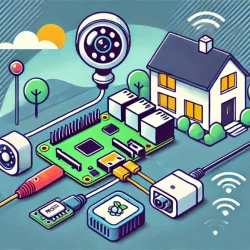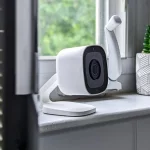Accurate Wire Stripping for Safe Electrical Connections
Every electrical connection depends on an uninterrupted source of electrons flowing down a wire. This electrical flow must be insulated from other wires and electricity sources to prevent fires and shorts. If you need to replace a hard-wired device, such as a ceiling light fixture, you may need to strip and connect wires accurately. Several key steps keep you and your project safe and powered in no time.
Turn Off The Power
Never work with any electrical wires without the power turned off. Unplug the device or shut the breaker off at the main electrical panel. Serious injury or death can occur if you touch an electrified wire.
Mark It
Using a marker, mark your intended stripping point on the wire's sheath. Because you need enough wire length to reattach it to another wire, allow 1 to 2 inches of wire to protrude from your marked point.
The Sheath
Most electrical wires have three separate wires housed in one sheath, including positive, negative and ground wires. You need to remove the sheath to access the individual wires. Using a sharp utility knife or hobby blade, apply a little pressure against the sheath until you feel the blade cut through the outside covering. Allow the blade to circle the sheath until it detaches from its main length. Pull the sheath off to reveal the three internal wires.
Wire Strippers And Their Use
Check the wires' size by reading the gauge listed on their insulation. Match the gauge size to your wire strippers. Most wire stripper tools offer multiple sizes for versatility during projects. Place one wire into the stripper at the correct gauge. Allow about 1 inch of length to protrude from the tool for attachment afterward. Carefully squeeze the stripper until you feel pressure. Release the stripper and slowly pull the insulation from the wire.
Keep Going
Repeat the stripping process for your other exposed wires. After stripping, use your fingers to feel for any nicks or breaks along the wire. Any broken wires should be discarded. Electrical shorts cause fire hazards and poor reliability in electrical devices, such as flickering ceiling lights.
Lost Strippers
It is possible to remove insulation off of thin wires with a utility blade, but it takes concentration and practice. Sharpen your blade to avoid slippage on the insulation surface. Place the wire in a vice for safety. You do not want to accidentally lacerate your fingers. Hold the blade at a 45-degree angle to the wire. Apply slight pressure until the blade cuts through the insulation. Continue to move the blade around the wire until the insulation can be removed by hand. If you make a mistake and cut through the wire, simply move farther back on the wire and begin your stripping action again.
Stripping wires takes practice, but proper tools make a difference. Purchase wire strippers with numerous gauge sizes for the best quality and versatility. Keep a steady hand during all cutting projects. For added safety, wear protective eyewear. Although insulation, sheathing and wire lengths should not fly at your face, preventing an accident keeps you healthy and allows you to finish your project.
More to Read:
Previous Posts:




